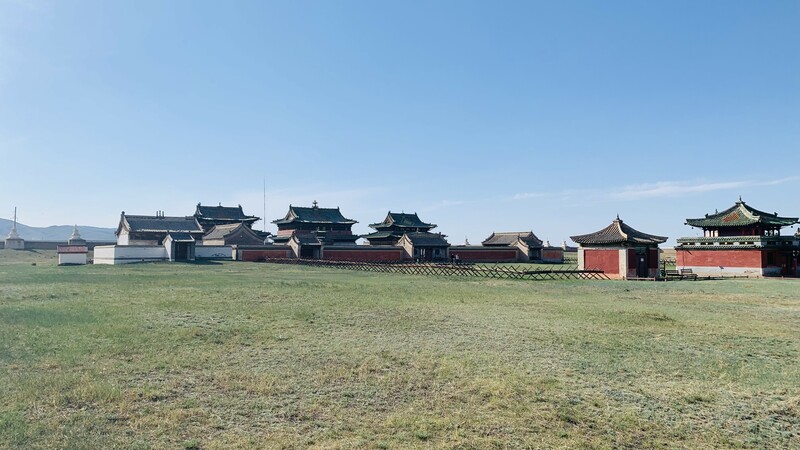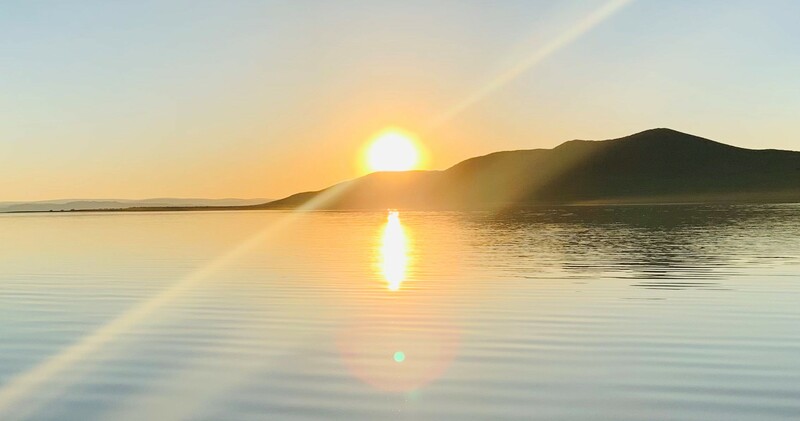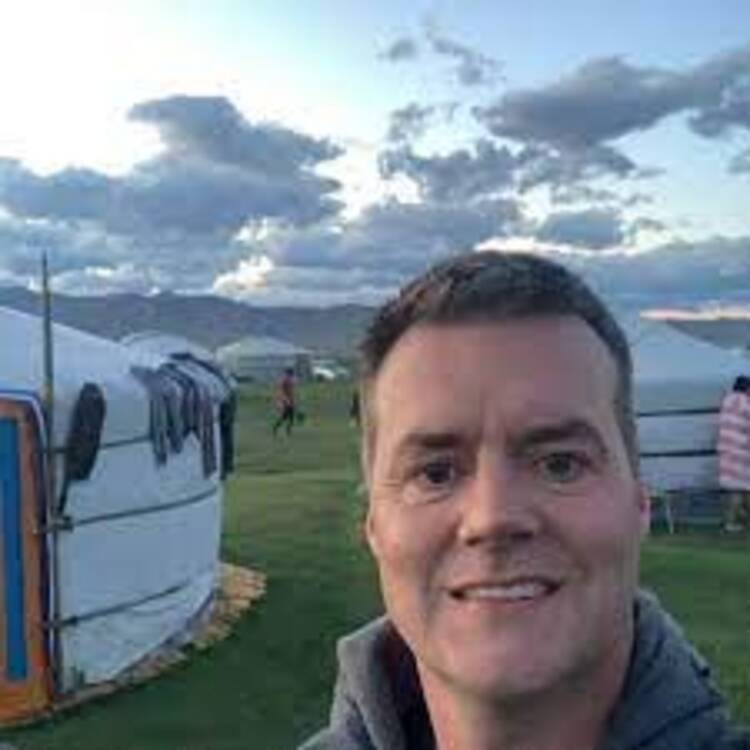This past summer I set out on a new adventure, travelling from the capital city, Ulaanbaatar, out to the city of Khovd in the far west...
Mongolia is a country full of adventures just ready to be experienced. Over the years I’ve had the opportunity to take travellers on many trips around the vast steppe, scorching deserts, icy pine forests and glorious mountains of Mongolia.
This past summer I set out on a new adventure, travelling from the capital city, Ulaanbaatar, out to the city of Khovd in the far west – a city I know well.
However, this time I would forgo the shorter, easier southern road in favour of a new route through the heart of the country.
Whilst some Mongolians claim to be able to do the drive along the southern route (which runs through the Gobi Desert) in a single day, the journey is around 1,470km.
This tougher route would take me 4 days to complete, covering over 1,600km but through much tougher, albeit more beautiful terrain.
On the upside, I managed to convince family friends to let me borrow their tough 4x4 which would make the trip a tad easier (and improve my survival chances!).
Day 1
The first hurdle, before the canyons, volcanoes, and mountains, was to escape the traffic of Ulaanbaatar.
Whilst you might associate Mongolia with eagles, camels, nomads, and other enigmatic highlights, after three years of living here, I spend much more of my time looking at the rear bumper of a Toyota Prius’ than eagles! Although I set off early to try and avoid the bulk of the traffic, it still feels like rush hour and feels like it would take longer than the expedition itself.
Finally, the traffic began to clear as I approached western Ulaanbaatar, the industrial hub of the city. Dotted with garages, warehouses and factories, if you’re looking to pick up a new tractor, lorry, generator, or any heavy machinery, this is the district for you.
Slowly, however, the city is giving way to the countryside as the buildings become fewer and fewer – eventually, the only sign of development is the railway line shadowing the highway leading out of Ulaanbaatar. Intriguingly, whilst in many countries, you might expect the capital city roads to be well maintained, in Mongolia the roads actually improve as you leave the bustling city onto the rural roads – so I breathed a sigh of relief (on behalf of the suspension) as I crested the first hill and the majesty of the Mongolian steppe stretched out in front of me through the windscreen – eventually, even the railway curved away, I was alone– thus began the adventure!
The first hurdle to cross was the Mongolian bureaucracy – across the country, as you pass between aimags (provinces) you must pay a toll of 1,000 MNT (Mongolian Tugrik) – worth about 25 cents. Venturing solo as a white man across Mongolia always garners odd looks at these toll booths, but after an attempt to speak to me in Russian by the bewildered operator, I was through the toll booth and out of the city officially.
As the drive continued, I began to get used to being back on the road, enjoying the scenery of the Mongolian steppe. However, there is one landmark which cannot be missed as you head west away from Ulaanbaatar.
Any traveller from the capital along this road will be unable to ignore the yellow peaks which peer over the horizon – as you approach, it will become clear that these are not strange yellow mountains, but the tips of sand dunes.
The so-called ‘Mini Gobi’ is a popular spot for holidaying Mongolians – this large chunk of desert sits in the middle of the Mongolian steppe – a contrast between lush green plains and glistening sand. Locals often spend their time here playing volleyball, riding camels, or just enjoying their surroundings – it almost has a feeling of a beach holiday destination… but in one of the world’s largest landlocked countries!
Waving the camels goodbye, I continued until I reached the ancient capital of Karakorum, the capital of the Mongol Empire during the 1300s. The city was once a melting pot of different cultures, people, and a crossroad for trade travelling along the silk road.
Although I really had a schedule to keep, I decided to spend some time visiting the Erdene Zuu Monastery in the city – the oldest surviving Buddhist monastery in Mongolia. Established in 1585, the monastery survived the initial onslaught of communist efforts to remove symbols of religion across the country and continues to operate as a monastery to this day.
Eventually, with my fix of culture complete, I continued on until the sun began to dip below the horizon, after which I stopped by the nearby Orkhon river and set up camp, the peaks surrounding the Orkhon Valley casting shadows over my makeshift campsite.

Day 2
I dragged myself out of the relative comfort of my sleeping bag as the sun peeked over the mountain tops, illuminating the valley and, more importantly, making it far too difficult to sleep.
So, after a quick coffee to wake my brain up, I set off in an attempt to make as much progress as possible whilst I still had sunlight.
That being said, there are many parts of this amazing country which make it impossible to drive all day without stopping for a brief stop. One such sight is a huge river canyon which scars the landscape of this part of central Mongolia.
From a distance, it’s tricky to spot, but as you approach you’d better spot it quickly otherwise one wrong turn will send you flying. This canyon, known by some as the Grand Canyon of Mongolia, seems so out of place amidst acres of flat steppe landscape – but that's what makes it so appealing.
Having had my fill of vertigo, and running out of stones to throw into the river below, I set off once again. The destination this time? My next waypoint. For some, you might use a signpost or a notable village as a landmark – for Mongolians traversing this route, the best waypoint is the huge extinct volcano which dominates the landscape it sits in.
I arrived in the early afternoon at the volcano and reckoned I had enough time for a quick hike up the tree-lined slopes to the crater. It’s said during the winter that steam rises from the heart of the crater due to the great temperature differential, although I was travelling in mid-summer and the outside weather felt just as harsh as the molten rock which dwells in the heart of the volcano.
After a peek down some of the lava tubes, not large enough to crawl through, but large enough for a quick look, I headed back down to the trusty vehicle and continued on my way.
The aim for this final stage of the day’s drive? Just keep going until either I, or the car, collapsed. Time to turn off the road and settle down for the night.
After countless years of leading tours, I like to think I have a good eye for camping spots – this time the landscape threw up many choices. I made camp on a slope, protected from the wind by the mountain behind me, and protected from the elements by the pine forest which coated the top of the hill.
After cooking a spaghetti dinner I sat down to take in the stunning landscape of central Mongolia, I retired to bed – well aware that tomorrow would bring with it a race against the sun.

Day 3
Day three. The target for today? A coffee… and after that, one of Mongolia’s most impressive lakes.
Khyargas Lake is almost like an inland sea – complete with waves, sandy beaches, and local Mongolian tourists in search of a weekend away at the beach. Waking up in the mountains, I reckoned I could manage the drive in a day – after all, getting there today would mean a straight drive tomorrow down to Khovd.
As it turned out – no. It’s very far away. After setting off, it became clear quickly that the mountains were slowly beginning to give way to more low-lying terrain. Still mountainous by all accounts, but by Mongolian standards the surrounding region was clearly becoming less towering.
Eventually, Mongolia got the best of me. I pulled off the road at another lake – Telmen Lake, also an enormous body of water. I decided to preserve energy, and enjoying my afternoon was preferable to driving through the night. After working out which part of the lake was most mosquito-free, I pitched a tent and sat down in my camping chair with a cold beer and a view over the water as the sun began to set.
Mongolia has a lot to offer, mountains, deserts, eagles, nomads, camels, the list goes on… but it’s easy, in this country of wonders, to overlook the simple pleasures – I can say with great certainty that the sun setting over Telmen Lake with the cool water lapping gently against my feet was one of the most wonderful experiences of this adventure and a truly incredible sight.
The only downside? In this part of the world, when the sun sets, that’s it. So the romance of the moment was slightly undermined by a stumble back to the tent and into the warmth of my sleeping bag (when the sun goes down it gets cold quickly).

Day 4
Day four – the final advance. The aim today was to reach Khovd. However, one of the few things I knew for sure before setting off was that this final stage would be a real challenge.
After an hour or two I finally reached Khyargas Lake, passing locals bathing in the water, enjoying BBQs with their friends and families and generally having a wonderful time. The sand, however, is strange at Khyargas – imagine, if you can, a cross between fine sand, coarse dust, and fine gravel.
A very weird mixture indeed; still, people didn’t seem to mind and it made for a nice lunch stop before the gruelling final leg began – and bloody hell was it gruelling!
After passing the lake the satnav suggests turning north, travelling for hundreds of miles in the wrong direction before looping back down along, what locals charitably call, the highway between Uvs and Khovd. However, I wasn’t about to add a fifth day to this adventure, so I turned off the road heading due south along dirt tracks which soon gave way to the arid landscape of western Mongolia.
At this point, there’s nothing to rely on. No phone signal, no wifi – just the advice of locals and my past experience of traversing this kind of terrain, off-road and just pointing in the right direction and driving.
If I’m honest, the drive was scary – I stopped regularly to check the tyres, to make sure I hadn’t shaken anything loose from the car, and to ensure all four wheels were still, in fact, on the vehicle. The drive took around 5 or 6 hours across the bumpy landscape which leads to Khovd.
However, eventually, in the distance, I spied telegraph poles – which meant people, or at least roads! After a few more bold manoeuvres over bumps, bushes, and small trees, I reached the road which links Uvs to Khovd. However, this is really a road in name only – often I felt I’d rather be back off-road than on this mish-mash of gravel, dirt, broken tarmac, akin to driving over a washboard.
As I approached Khovd, the road became more solid, turning the final few corners towards the city I was confronted with an unmistakable sign of civilisation – I was unaware that in the year I’d been away a huge new concrete factory had been built just outside of the city. So, passing this industrial behemoth, I made the final few turns around the mountains until a welcome sight greeting me through the windscreen.
I was in Khovd City. With a population of around 30,000, Khovd may not be a metropolis, but after four days of camping with nothing more than marmots and the odd eagle to keep me company, the sight of the regional capital was a welcome one.
Khovd is familiar to me, whenever I visit I tend to stay with family and friends and that was my plan this time. Criss-crossing through the heart of the city, passing the first traffic lights I’d seen since Ulaanbaatar, I made the final turn towards where my friends and family had set up their summer ger.
Parking the car for the final time, I prepared to spend my afternoon with a cold beer in one hand, lying against a grassy knoll with my feet dangling into the Khovd River (really more of a picturesque stream at this point) staring at the rocky mountains which tower over the city.
The adventure was at an end, the day drawing to a close, and all that remained… was to think about the drive back! 
Overview
The journey from Ulaanbaatar through the heart of Mongolia, the outdoor capital of the world, is truly the best way to experience the contrast of the country. Leaving the capital, the lush green grass of the steppe in the Orkhon Valley creates an Eden-like atmosphere. However, this quickly gives way to huge mountains, craggy canyons and mountain passes.
Continuing on, the landscape shifts once again to a desert-like, sandy, arid landscape more reminiscent of the Gobi Desert than central Mongolia, however, it’s this completely alien landscape which persists all the way down to Khovd.
It’s for this reason that I’ve been so keen to work this adventure into a proper Mongolia tour, so keep an eye out for our Golden Eagle Festival Tour in September/October which will traverse this stunning landscape and combine this unique adventure with another highlight of western Mongolia, the Kazakh Eagle Hunting Festival where local eagle hunters demonstrate the insane abilities of their hunting birds and generally enjoy themselves as they celebrate this incredible festival!
